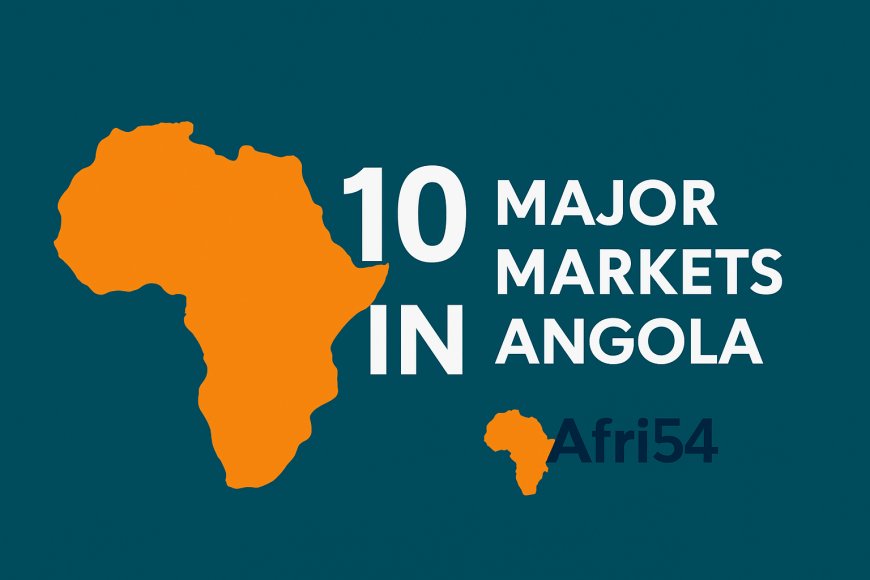10 Major Markets in Angola
Discover the 10 major markets in Angola, from Luanda’s historic Roque Santeiro to Benguela, Huambo, and Lubango. Explore Angola’s trade, culture, and vibrant community life.

Reading Time: ~8 minutes
Angola, one of Africa’s fastest-growing economies, is not only rich in oil and diamonds but also in vibrant markets that showcase the country’s culture, trade, and community life. From the capital Luanda to inland provinces, markets in Angola play a central role in food supply, handicrafts, and wholesale trade. Here are the 10 most significant markets in Angola, ranked by size and influence.
1. Roque Santeiro Market (Luanda)
Once the largest open-air market in Africa, Roque Santeiro was legendary. Though relocated, its spirit lives on in the Kilamba district, where vendors sell clothing, electronics, food, and second-hand goods. It remains Angola’s most famous marketplace.
2. Asa Branca Market (Luanda)
Located in Viana, Asa Branca is a massive hub for wholesale goods, construction materials, and imported items. Traders from across Angola flock here to buy in bulk.
3. São Paulo Market (Luanda)
This bustling market is known for fresh produce, meat, fish, spices, and fabrics. It’s a daily go-to for Luanda residents and a great place to feel the pulse of the capital.
4. Benfica Craft Market (Luanda)
Popular among tourists, the Benfica Market is where artisans sell wood carvings, paintings, jewelry, masks, and African fabrics. It’s a cultural hotspot that preserves Angolan art and craftsmanship.
5. Congolenses Market (Luanda)
A massive open market in the Cazenga area, Congolenses offers everything from clothes and shoes to electronics and foodstuffs. It’s one of the busiest and most affordable shopping destinations in Luanda.
6. Catinton Market (Luanda)
Specializing in fresh produce, Catinton is a colorful food market with fruits, vegetables, grains, and fish. It’s essential for household supplies in the city.
7. Lobito Market (Benguela Province)
Situated in the coastal city of Lobito, this market thrives on seafood, salt, textiles, and crafts. It’s also a central hub for trade between Benguela and Luanda.
8. Benguela Central Market (Benguela Province)
The main market in Benguela city offers agricultural produce, clothing, and household items. It’s a regional hub that supports the province’s farming and fishing industries.
9. Huambo Market (Huambo Province)
In Angola’s fertile central plateau, Huambo’s market is known for grains, maize, beans, livestock, and traditional crafts. It reflects the province’s strong agricultural base.
10. Lubango Market (Huíla Province)
The Lubango market is one of the largest in southern Angola, offering meat, dairy products, fresh produce, and local crafts. It’s also a major trading stop for goods moving toward Namibia.
Why Angola’s Markets Matter
Angola’s markets are more than just economic hubs — they are spaces of identity, resilience, and community. From Luanda’s vast urban markets to the artisanal hubs of Benguela and Lubango, these centers of commerce connect Angola’s diverse cultures and fuel its economy.
Final Thoughts
Exploring Angola’s markets is a journey into the country’s rich culture and entrepreneurial spirit. Whether you’re hunting for fresh seafood, hand-carved masks, or wholesale goods, these markets reflect Angola’s balance between tradition and modern commerce.
Have you listed your business on Afri54?
Afri54 exists to solve a fundamental challenge faced by millions of African businesses: lack of visibility. Whether you’re an automobile part seller in Lagos, a local attire manufacturer in Kigali, a coffee exporter in Addis Ababa, or a mobile phone supplier in Accra, you deserve to be seen. Join us


















